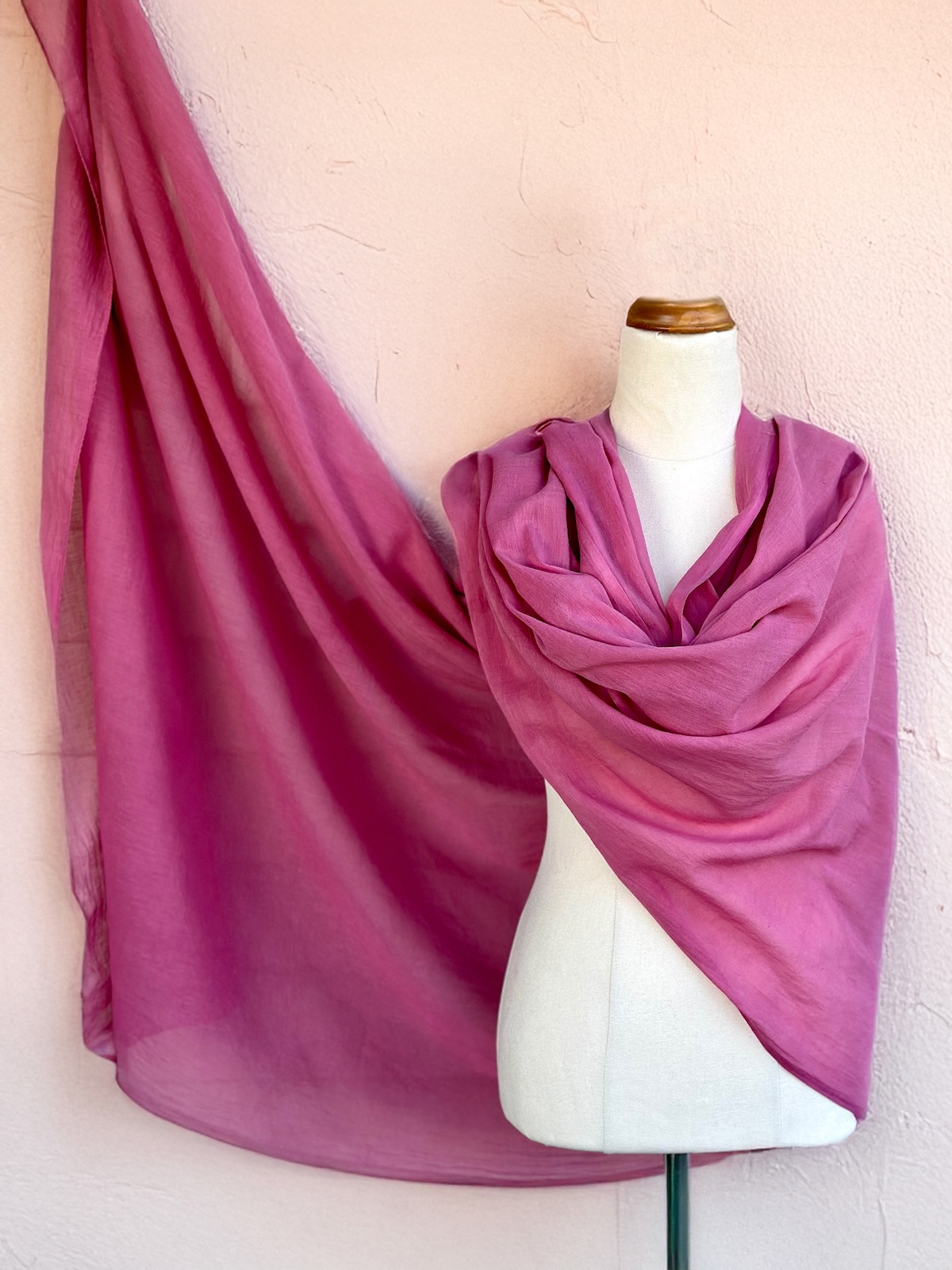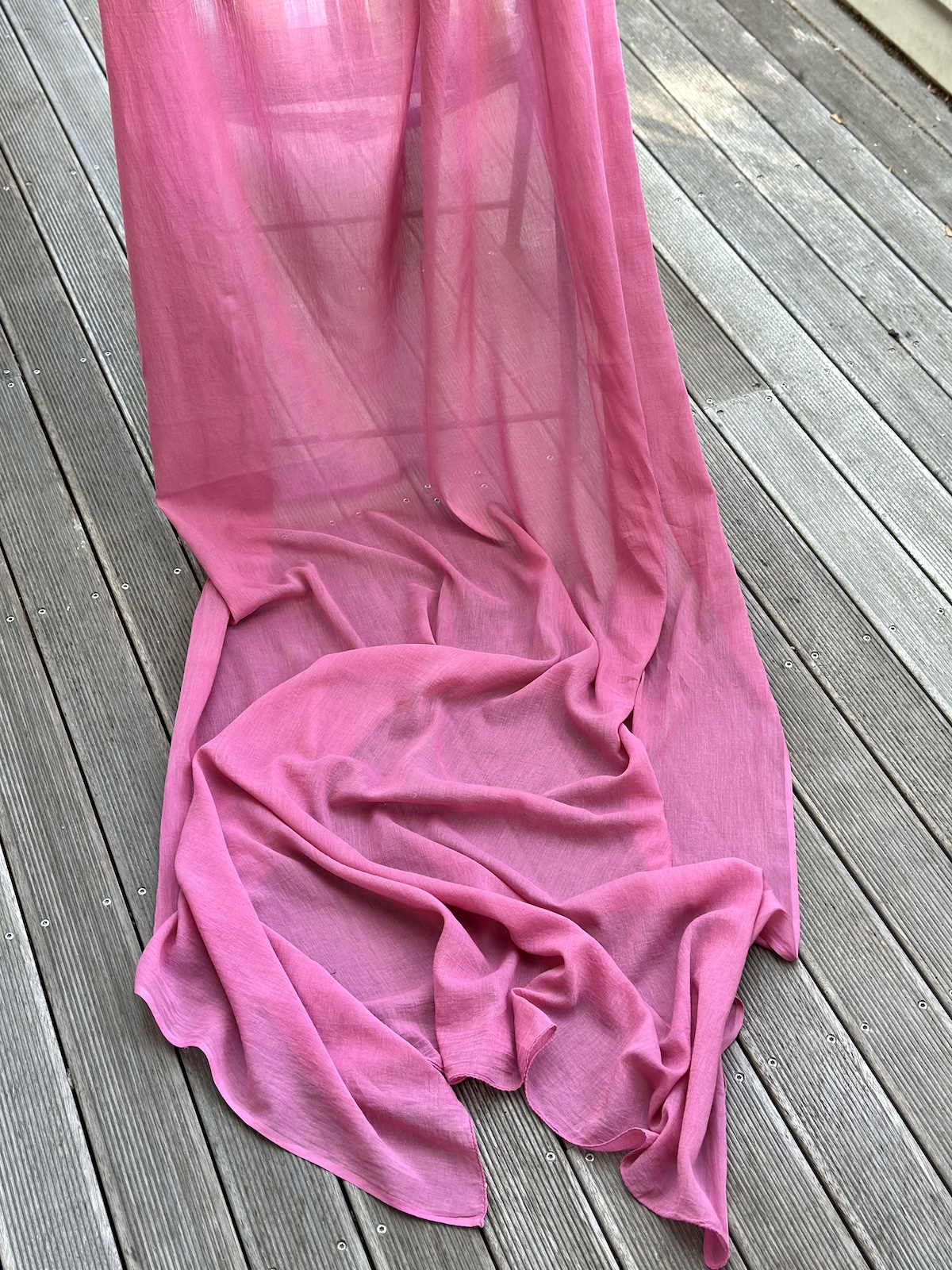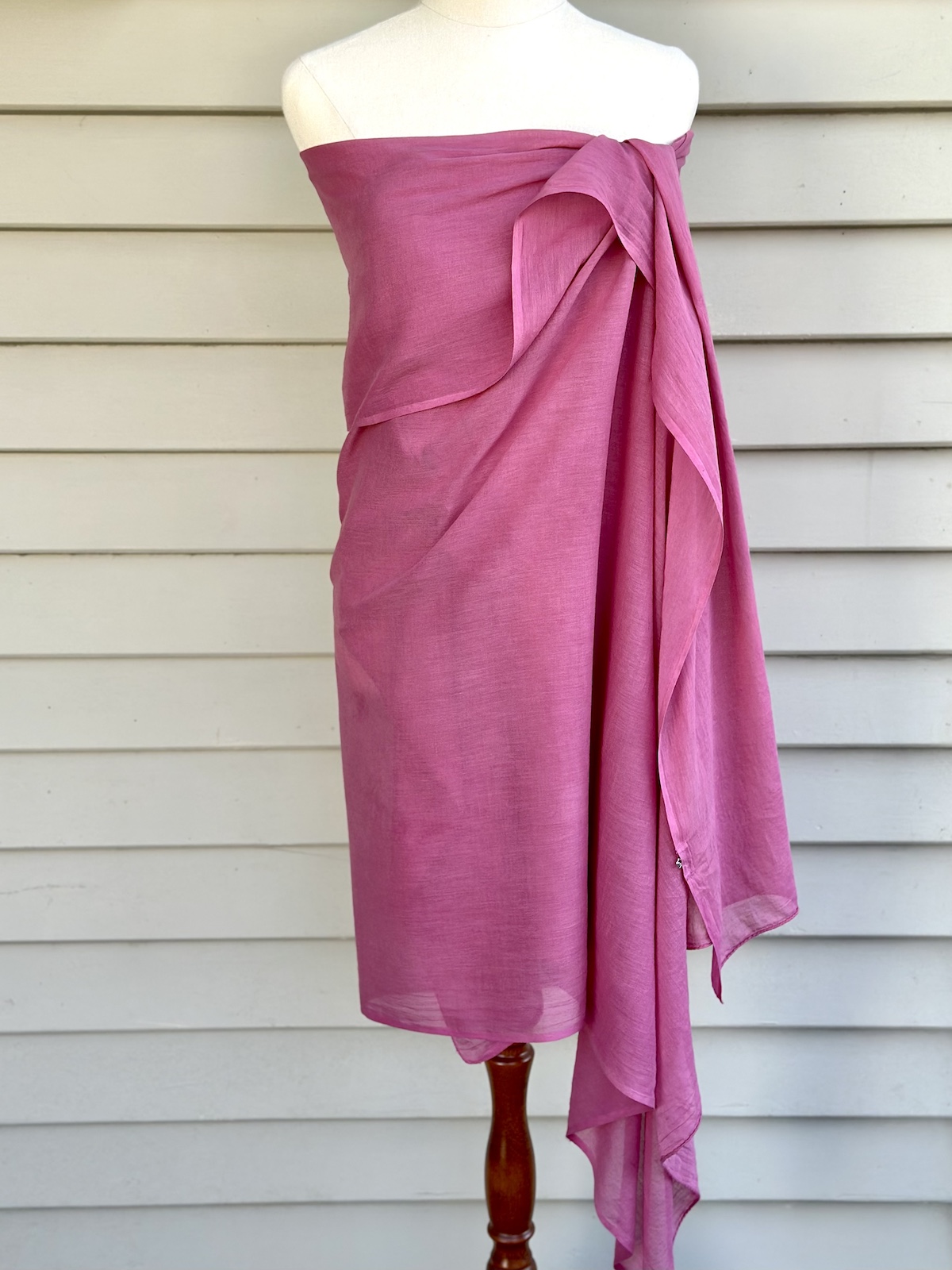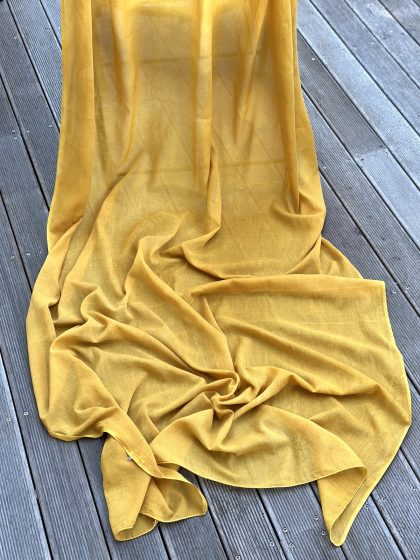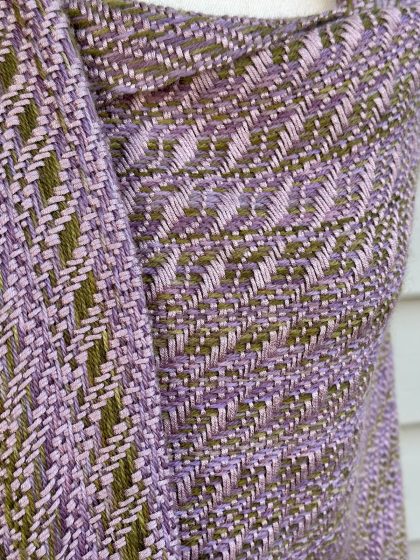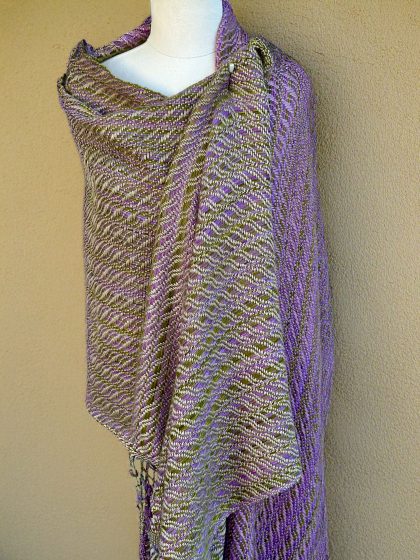Archilla: The name is inspired by the lichen dye Archil, a dye lost to the west until about the 14th century. An Italian merchant began using the lichen archil to dye wool and silks the much loved rich purple that had previously been associated only with the wealthy.
This shawl was dyed using cochineal, the most important of the insect dyes. The females of Dactylopius coccus colonize the prickly pear (nopal) cactus native to Mexico, Central and South America. Cochineal has excellent light and washfastness and produces a powerful fuchsias, reds and purples. The colour changes with the mordants used and pH of the dyebath. Although expensive, it is very concentrated. The bugs have a high dye content (carminic acid) and go a long way.
The shawl is a dream cloth. Very large and deliciously sheer and supple. It drapes well, and will look lovely wrapped a couple times around your neck, and as an accent piece. This can also be worn as a beach cover-up, like a sarong.
The shawl has been hand washed and line dried, then hot pressed.
Dimensions: width 43″ – 100cm // length 90″ – 228cm.
Dye: Cochineal.
Materials: Organic cotton muslin. Rolled hem.
Care: To protect the natural dyes and to preserve the vibrancy you absolutely must use a pH neutral liquid detergent. Hand wash only. Squeeze and twist to remove excess water and hang to dry. Hot iron.
__________
Though I strive, it is difficult to 100% recreate a natural dye fibre. Every piece is unique and numbered.
Buttery organic cotton spun in India, woven by artisans to a soft semi-transparent fabric that is light and airy. These are sourced undyed in their natural off white state. Then I prepare the fibre for dyeing. It takes many hours to scour and mordant the fibre before the dye can reach the cloth. After dyeing the cloth must rest for at least 2 weeks to settle the dye and optimise lightfastness. Only then can the cloth be washed and prepared for wear.
Natural dyeing is the pure historic foundation of colour. It is a long worthwhile process with numerous steps and stages. Before modern day industrial milling and dyeing, natural dyes were the only way to add colour to beige, brown and off white fibres. This was most arduous as many base ingredients (roots, bugs, leaves, flowers) had to be hand harvested and pounded over time to produce the base for dyeing. Life is much easier now as I can purchase the powder or small bug or root bits ready to go. The harvesting may be more streamlined, but the human element remains, and the base dyes are more expensive than acid dyes.

